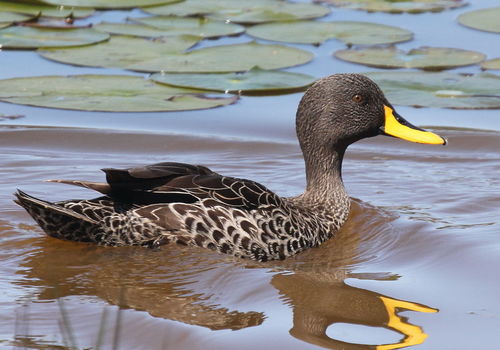
Yellow billed duck
Anas undulataYellow billed duck
Introduction: Yellow-billed ducks (Anas undulata) prefer a habitat of open waters of estuaries, stillish waters of rivers, lakes, streams, marshes, swamps, dams and sewage works. They avoid areas of fast-flowing waters. Pairs and groups numbering many hundreds can be observed in these places and they usually spend their day floating near aquatic vegetation, on open or shallow water.
Distribution: Patchy distribution range includes Etosha National Park and the Orange River. More common in the Caprivi, Kwando River and Chobe River regions.
Diet: Yellow-billed ducks forage by swimming, immersing the head and bill before up-ending. The eat a mixture of plant matter, mainly pondweed as wells as grasshoppers and snails.
Description: Small to medium-sized ducks with grey-black necks and heads.
Breeding: Between 2 and 10 eggs are laid year round with an incubation period of 26 to 29 days. Males abandon females during or at end of incubation.
Size: 57cm.
Weight: 965g.
Klein Windhoek

